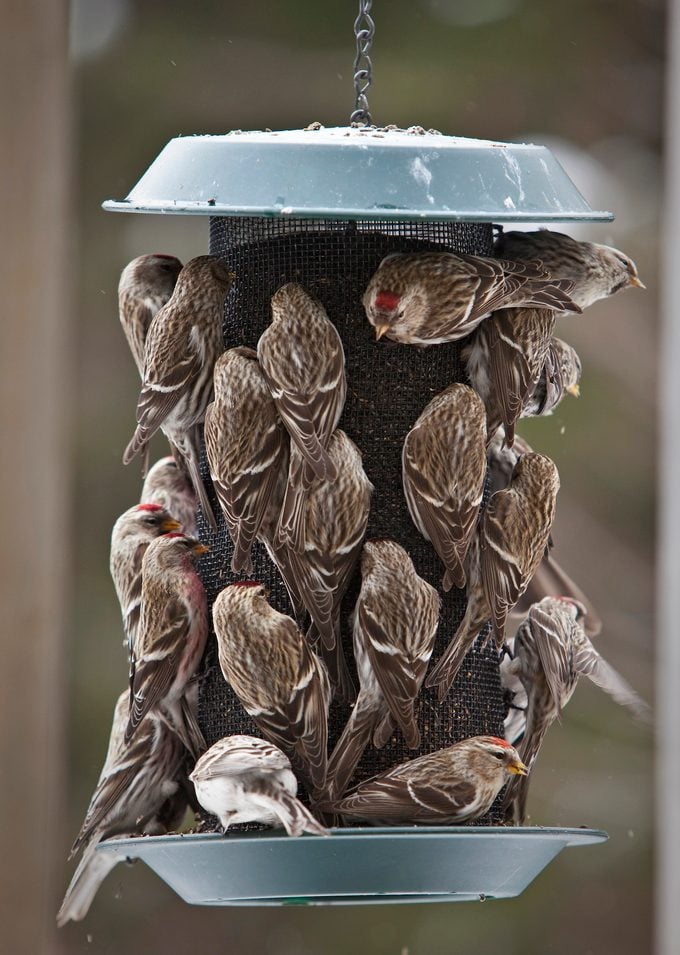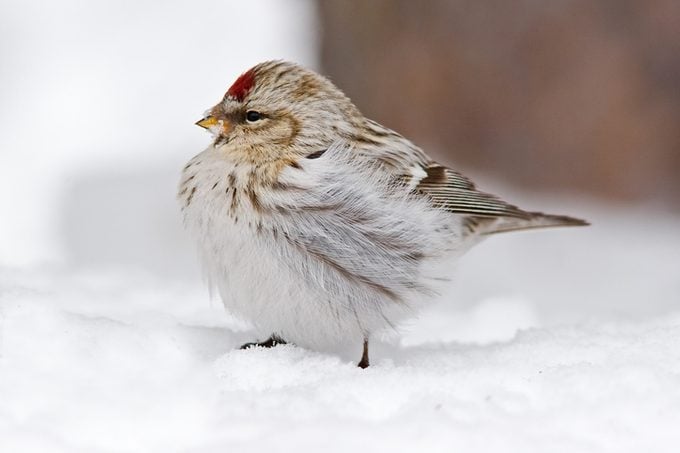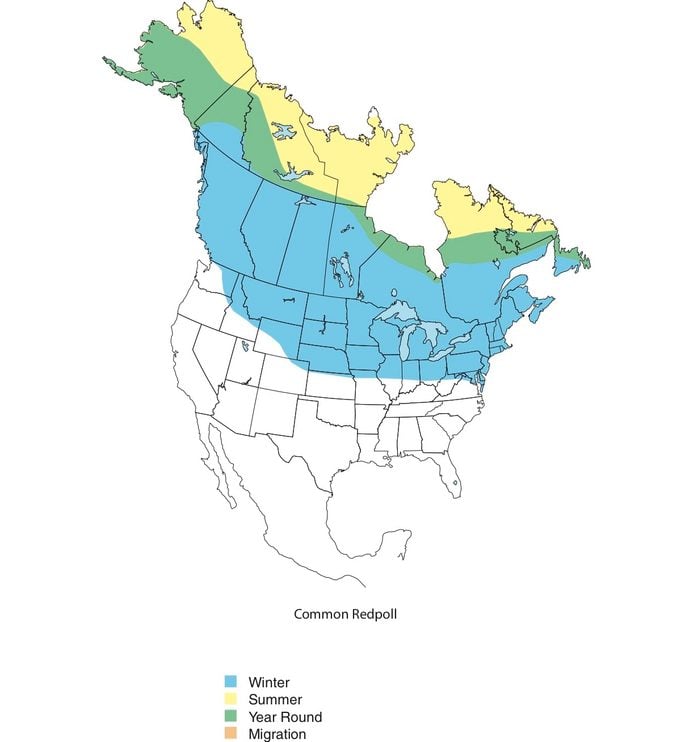Identify and Attract a Common Redpoll
Updated: Jul. 09, 2024
The resilient common redpoll brings lively cheer to cool-weather feeders. This small bird can handle the coldest temperatures in winter.
On This Page
Common Redpoll Identification

Imagine a songbird as hardy as a polar bear but as tiny as a pine siskin. The common redpoll is that bird.
A member of the finch family, this tough little creature thrives in the harshest and coldest environments. The farther south you are, the less likely you are to see a redpoll (but if you’re in the southwest, you might see a rosy finch). Even in the north, they move in unpredictable ways within their range, following food sources.
It’s easy to confuse redpolls with other brown finches, like house finches, which also have red on their heads and chests. To verify whether you’re seeing a redpoll, look for the black patch around its bill.
Some birds take shelter in birdhouses or tree cavities when it gets cold outside, but not redpolls. These chill-resistant fliers sometimes roost under the snow to insulate themselves from frigid, subzero temperatures.
Learn how to attract goldfinches to your backyard.
What Does a Common Redpoll Eat?

A flock might clean out a feeder in a day during some winters…or it might not show up at all. “Common redpolls stay in the northern latitudes if food is readily available,” explains Emma Greig, a program leader for Project Feederwatch, which is organized by the Cornell Lab of Ornithology. “They’re fun to watch because they constantly sort out dominance.”
These hungry birds usually snack on small seeds from grasses and trees, plus catkins and buds in spring and insects in summer. Groups fly in big acrobatic flocks. Alighting for a moment on one branch and then flitting to another, the petite backyard visitors are in constant motion and continually displace each other at feeders.
Ones that can’t manage to push their way through the crowd eat from the ground. Emma recommends Nyjer seeds for attracting redpolls because the seeds are so small and oily. “Cold weather birds appreciate the fat,” she says. They like sunflower seed and millet seeds, too.
“Some years, redpolls are prevalent at finch feeders, and some years they are uncommon. Their movements show us what’s happening with native, wild foods,” Emma says.
Check out this year’s updated winter finch forecast.
Nest and Eggs
These sturdy birds breed near the Arctic Circle, where they stay in willow and alder thickets, the edges of birch and spruce forests and bushy areas on the tundra. When it comes time to attract a mate, the male flies in circles while he sings and offers food.
Once paired, the female builds her nest of twigs, grass and moss on a low branch, then lines it with grouse feathers or fur. If she calls the tundra home, her nest might rest on rock ledges or shrubby ground covers.
Mother redpolls lay four to seven green eggs with purple spots, which hatch in about 10 days. Chicks grow quickly, fledging after only 12 days.
Learn how to identify a purple finch.
Common Redpoll Calls
As these vocal birds gather in flocks, listen for their whistle-like zap! and dreeee! calls.
Bird sounds courtesy of the Cornell Lab of Ornithology
Hoary Redpoll vs Common Redpoll

There are two kinds of redpolls but the paler one, the hoary redpoll, stays in the Arctic, rarely visiting feeders in Canada. Adult common redpolls are about 5 inches long, with white bars on each wing and a red patch on their foreheads. They also have dark legs, yellow beaks, white bellies and notched tails. Males sport a reddish wash on their chests.
Common Redpoll Range Map
Cold hardy common redpolls nest in the Arctic, migrating south irregularly in winter to southern Canada and the northern U.S.

Range maps provided by Kaufman Field Guides, the official field guide of Birds & Blooms.
Next, don’t miss these pretty pictures of finches.
About the Expert
Emma Greig is the project leader of Project FeederWatch, a citizen science program, for the Cornell Lab of Ornithology. Emma holds a Ph. D. from the University of Chicago and previously was a postdoctoral associate in Macaulay Library.






















